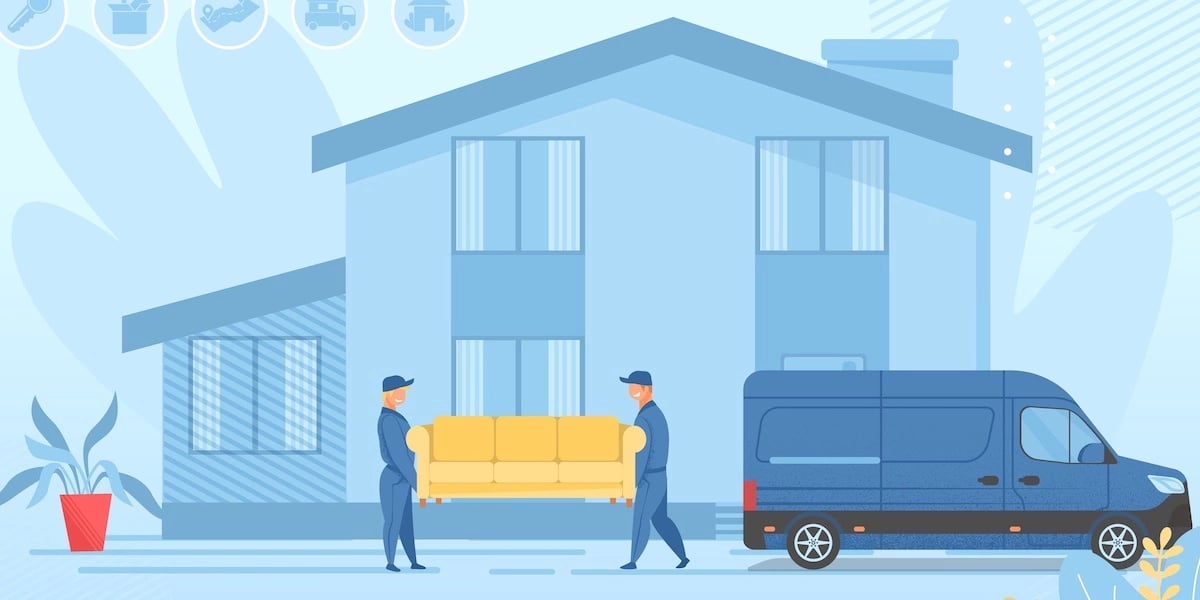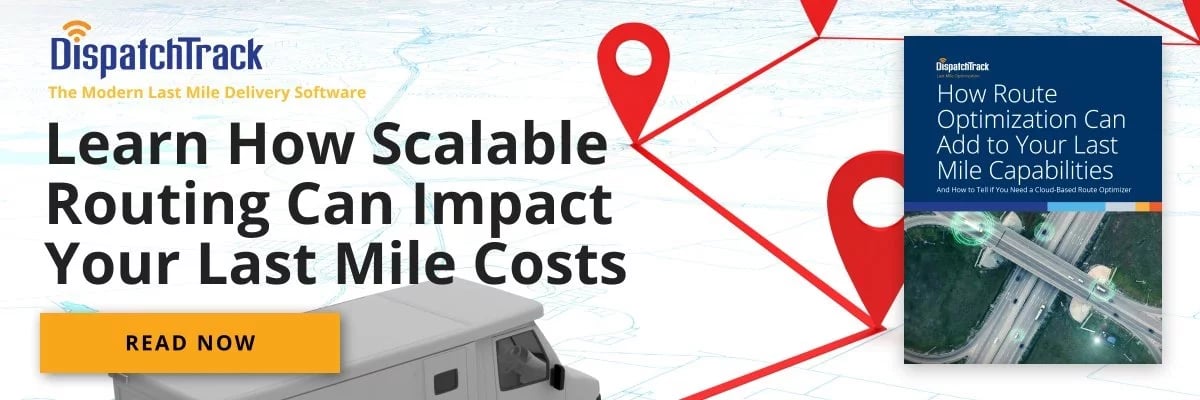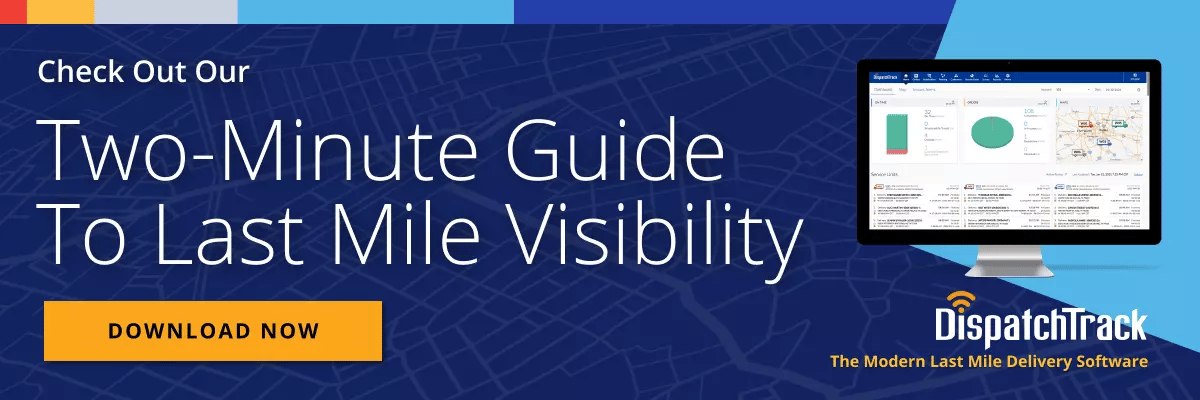A Retail Insider study revealed that roughly 57 percent of US-based firms claim that their last mile is the least efficient part of their supply chain. With COVID-19 in 2020—to say nothing of ongoing supply chain crises—disrupting not only our everyday lives but also e-commerce's importance, enterprises are now confronted with more last mile challenges than ever before.

Getting your goods delivered the same day or the next day is becoming more common, but these delivery options are still a logistical headache for companies. Today's sellers face more stringent buyer expectations and are under increased pressure to solve last mile home delivery challenges.
It’s hard to overstate how important this is. 55 percent of shoppers say that they are likely to switch to different brands or retailers if they’re offering quicker and more reliable delivery services. These accelerated delivery requirements are difficult to meet due to the costs and difficulties traditionally associated with logistics and supply chain operations.
Last mile operations and delivery play a significant role in overall customer experience and financial performance for everyone from mid-sized businesses to large enterprises. The last mile has a significant impact on customer satisfaction and loyalty, and it’s never been more important in today's competitive environment.
The following are some of the biggest challenges posed by last-mile delivery, and what you can do to overcome them.
High Costs
Although 86 percent of consumers are willing to pay for expedited delivery, most businesses find it difficult to execute it on a cost efficient basis. Moreover, the volatility of demand makes it very difficult to decide how much inventory to hold, how much temporary staff to hire, and many other factors that affect overhead costs. After all, there are other expenses to take into account, such as warehousing, fuel, vehicle maintenance, and labor. Likewise, setting up a reliable delivery system could be expensive
To make matters worse, rescheduled delivery attempts double your last mile delivery costs. That means that while it can be expensive to systematically optimize your deliveries to ensure on-time performance and high customer engagement, it can be much more expensive not to.
Inefficient route planning
There is no escaping route planning. It's complex, confusing, and highly dependent on a number of variables, ranging from driver skill to traffic. Still, it has to be done. Accurate route planning is essential to creating an efficient, cost-effective, and customer-satisfying delivery. The growing pressure to reduce fuel consumption and increase efficiency makes routing efficiency crucial to last-mile delivery success.
Not only does it impact the cost, but it also has a profound effect on delivery success, as it directly impacts ETA accuracy. Delivery delays due to inefficient routing programs can result in missed deliveries or missed service level agreements (SLAs), which can negatively affect customer service.
Many brands really do struggle with meeting promised delivery time frames. Missing the deadline could prove costly, both short and long-term. It damages your brand's reputation, and it decreases customer loyalty. At the same time, it throws the rest of your delivery plans for that day into disarray, leading to even more confusion and frustration.

As same-day deliveries become more common, routing efficiency becomes an increasingly important factor in fulfilling orders, but it is not always easy to achieve. Routing efficiency can be achieved in various ways, but it can be challenging to find the solution that is best suited to the needs of your fleet.
Poor address quality
One study found that 65 percent of retailers believe that failed deliveries resulting from poor address quality affect delivery profitability. Poor address quality makes it difficult to manage last mile carriers as well.
There are several reasons why this might happen. Often, jobs are assigned manually, leaving room for human error. There is always a chance for shipments to be misassigned or missed out on a specific route. At the same time, drivers sometimes wind up traveling to the wrong address if the delivery organization hasn’t proactively confirmed with the customer that the address is correct. In a B2B situation, you might be delivering to a construction site that doesn’t map onto an exact address in a straightforward way.
Unpredictability in transportation
There are many obstacles to overcome when dealing with last mile logistics. The best laid plans often go awry, and there will be times when—through no fault of your own—your original delivery plan simply falls apart.
Things like traffic incidents and unexpected weather delays are beyond the control of fleet managers and dispatchers and invariably happen when you least expect them. That’s why it’s so important to have a communication plan to ensure that any delay is communicated proactively to stakeholders. By the same token, it’s important to have the flexibility you need to adjust your delivery plans on the fly based on real-time information.
Lack of transparency
Today, it is expected that customers can track their orders. Consumers expect to be notified whenever their orders progress. Customer satisfaction suffers when communication is poor.
That said, building transparency into your delivery processes can be easier said than done—especially if you don’t have the tools to automatically receive status updates from drivers in the field. It’s not just customer satisfaction that’s impacted when last mile home delivery is a black box—it’s your own ability to stay agile and adaptable during the delivery process.
How Can Technology Improve Last Mile Home Delivery?
Although resolving these challenges might seem impossible, the right technological solutions can help. Implementing the right last mile home delivery management software will enable enterprises to automate and optimize their delivery processes and ultimately delight their customers with right-time deliveries.
Here are some of the ways that the right last mile delivery software companies technology can give you the tools to improve your delivery operations.
Automation
Labor-intensive processes are usually more prone to error, which increases operating costs. With automated dispatching, customized customer alerts and notifications, and electronic proof of delivery, companies can increase their efficiency.
Automation also makes it easier to generate analytics for delivery processes, thus enabling you to monitor the fleet’s performance using historical and real-time data.
Route optimization
Last mile solutions powered by artificial intelligence can intelligently optimize routes for fleets. You can use this functionality to determine the most cost-effective routes, manage exceptions, and give real-time updates to customers about where the delivery vehicle is located.
Visibility
The right technology makes it possible to see exactly what’s happening across your delivery operations at any given moment—powering smarter exception management and smoother operations. To make this happen, your technology needs to offer a robust driver mobile app that enables you to get automated status updates on every route and delivery throughout the day.
When you have high levels of visibility, you can also extend that visibility to your costumes, creating a more transparent delivery experience that results in fewer missed deliveries.
As the delivery landscape changes rapidly, it is necessary to solve the challenges in last mile delivery as quickly as possible. Now is the time to start thinking and investing in robust last mile home delivery solutions to overcome the current challenges to ensure both operational excellence and profitability both in the short and long term.
